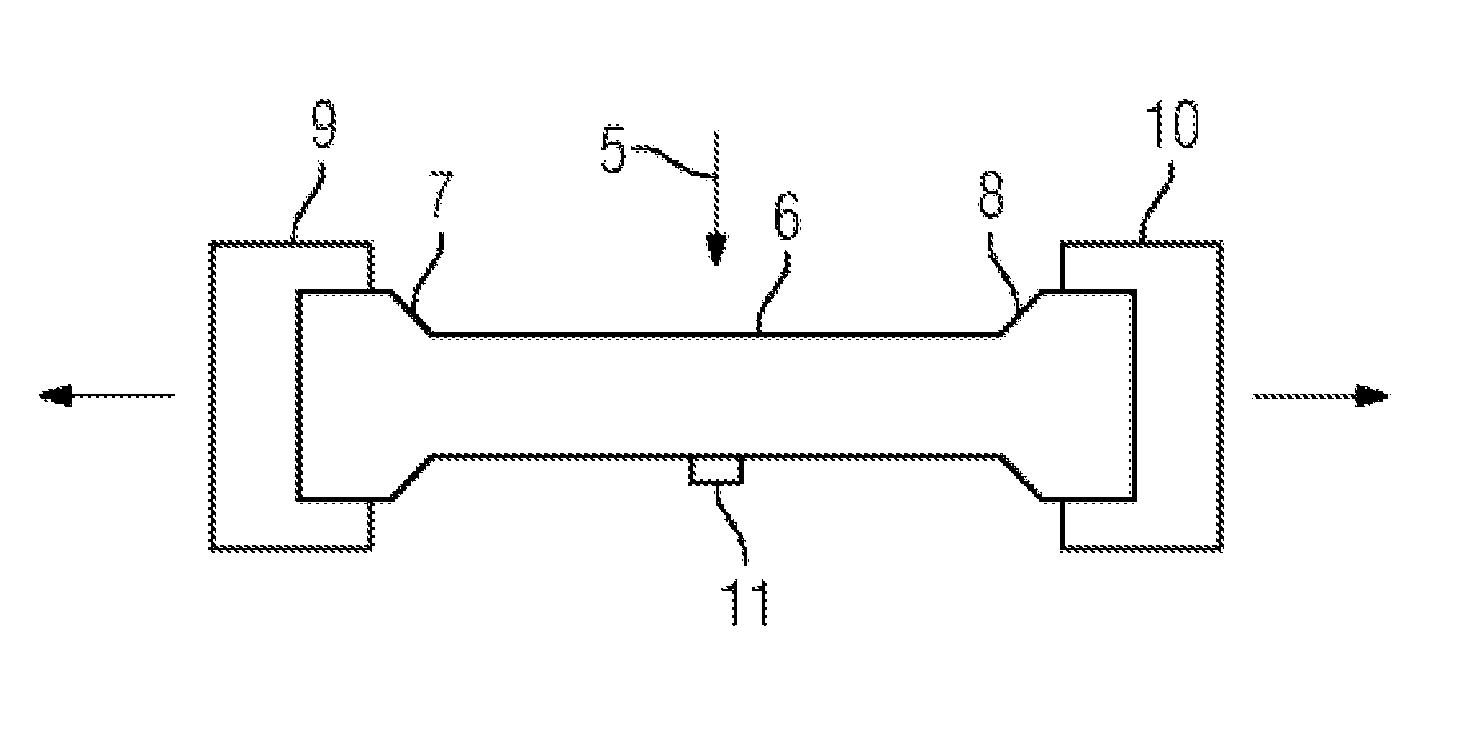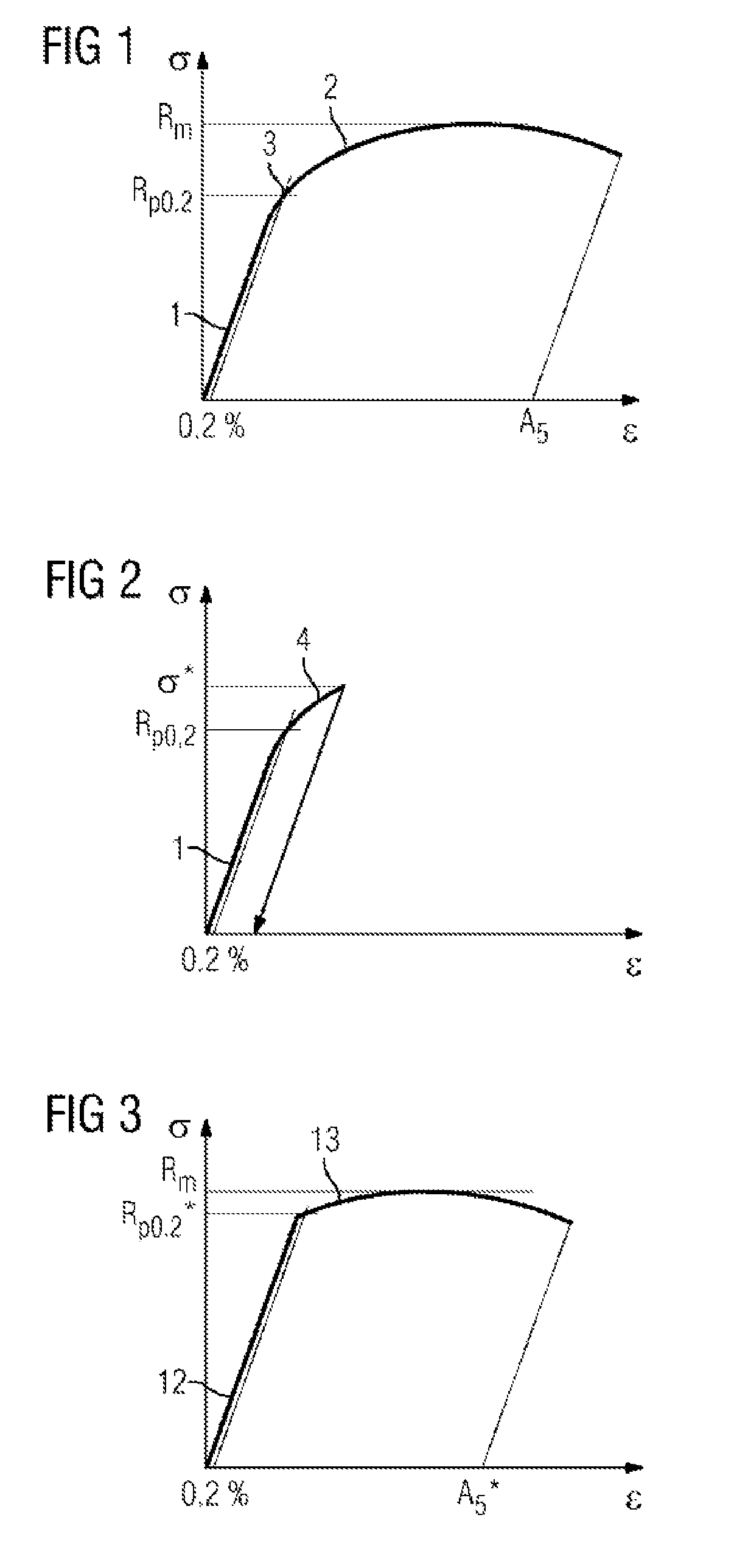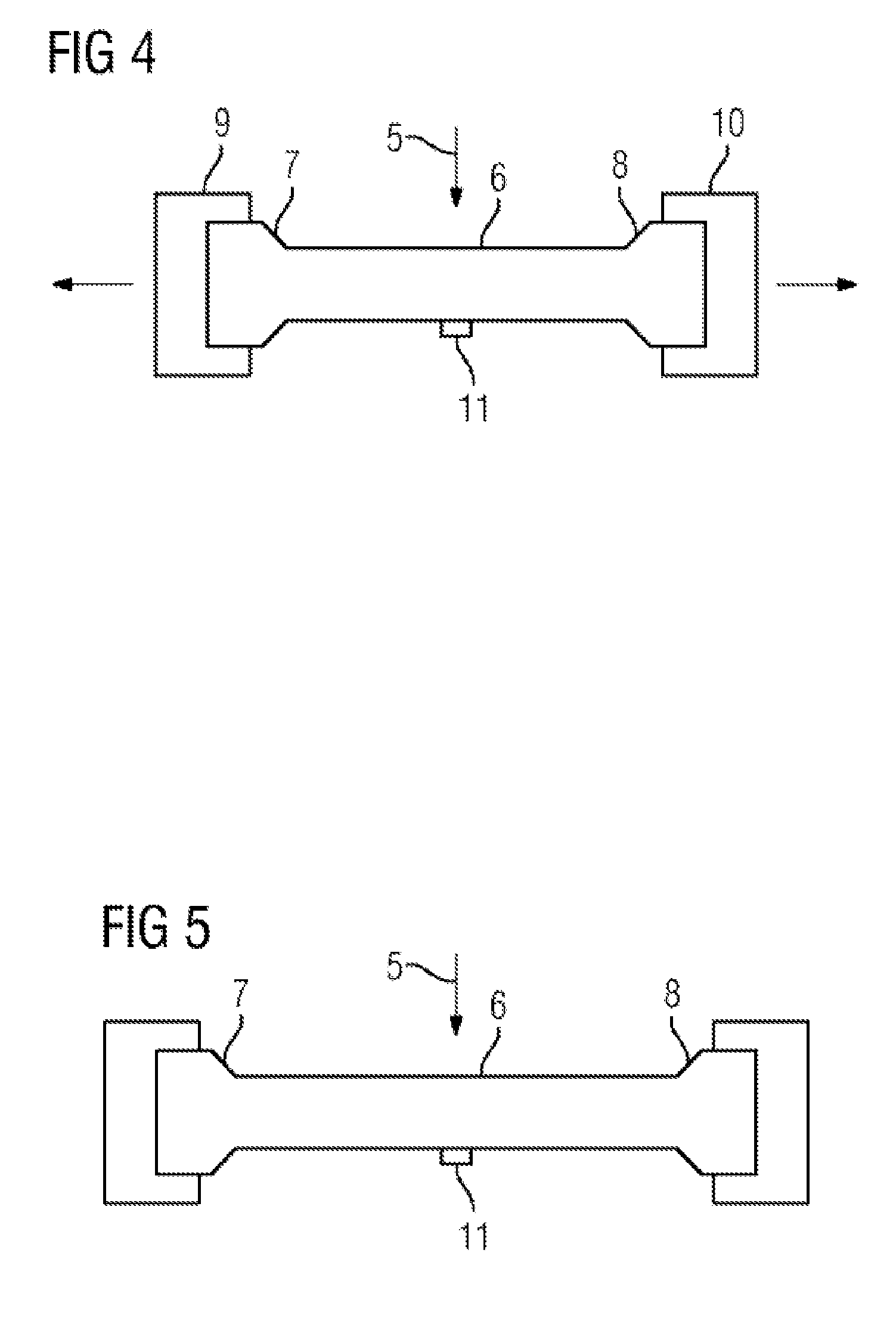Method for producing a compressor blade by forging and uniaxially stretching
a compressor blade and uniaxial stretching technology, which is applied in the field of producing compressor blades, can solve the problems of high production cost, high production cost, and high cost of compressor blades for axial compressors, and achieve the effect of low production cos
- Summary
- Abstract
- Description
- Claims
- Application Information
AI Technical Summary
Benefits of technology
Problems solved by technology
Method used
Image
Examples
Embodiment Construction
[0022]FIG. 1 is a first stress-strain graph, the strain being plotted on the abscissa and the stress on the ordinate.
[0023]An austenitic-ferritic steel is used for the method for producing a compressor blade. This stainless steel is also referred to as duplex steel. Firstly, a blank is forged from this steel. The blank is square bar stock, which is later divided up. In this way, a plurality of compressor blades can be produced from one blank. It is evident from FIG. 1 that the steel initially has a linear-elastic behavior under tensile loading, this region being denoted by the reference sign 1. This is adjoined by a plastic region, i.e. when a specific elongation has been exceeded, plastic deformation remains after load relief. The 0.2% elongation limit 3 can be used, for example, as the limit value between the linear-elastic region 1 and the plastic region 2; at this point of the stress-strain graph, the material has an elongation of 0.2% with respect to its initial state. It can b...
PUM
| Property | Measurement | Unit |
|---|---|---|
| elongation | aaaaa | aaaaa |
| yield strength | aaaaa | aaaaa |
| elongation at break | aaaaa | aaaaa |
Abstract
Description
Claims
Application Information
 Login to View More
Login to View More - R&D
- Intellectual Property
- Life Sciences
- Materials
- Tech Scout
- Unparalleled Data Quality
- Higher Quality Content
- 60% Fewer Hallucinations
Browse by: Latest US Patents, China's latest patents, Technical Efficacy Thesaurus, Application Domain, Technology Topic, Popular Technical Reports.
© 2025 PatSnap. All rights reserved.Legal|Privacy policy|Modern Slavery Act Transparency Statement|Sitemap|About US| Contact US: help@patsnap.com



